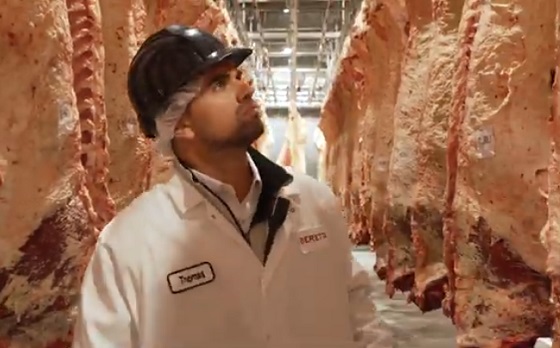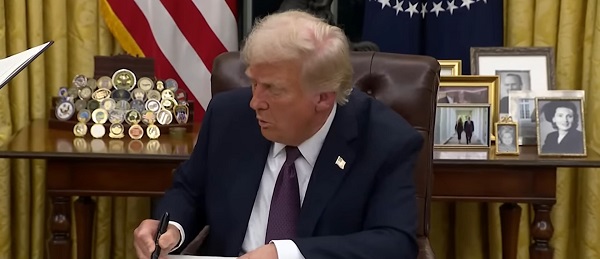Business
Debunking the myth of the ‘new economy’

From Resource Works
Where the money comes from isn’t hard to see – if you look at the facts
In British Columbia, the economy is sometimes discussed through the lens of a “new economy” focused on urbanization, high-tech innovation, and creative industries. However, this perspective frequently overlooks the foundational role that the province’s natural resource industries play in generating the income that fuels public services, infrastructure, and daily life.
The Economic Reality
British Columbia’s economy is highly urbanized, with 85% of the population living in urban areas as of the 2021 Census, concentrated primarily in the Lower Mainland and the Capital Regional District.
These metropolitan regions contribute significantly to economic activity, particularly in population-serving sectors like retail, healthcare, and education. However, much of the province’s income—what we call the “first dollar”—originates in the non-metropolitan resource regions.
Natural resources remain the backbone of British Columbia’s economy. Industries such as forestry, mining, energy, and agriculture generate export revenue that flows into the provincial economy, supporting urban and rural communities alike. These sectors are not only vital for direct employment but also underpin metropolitan economic activities through the export income they generate.
They also pay taxes, fees, royalties, and more to governments, thus supporting public services and programs.
Exports: The Tap Filling the Economic Bathtub
The analogy of a bathtub aptly describes the provincial economy:
- Exports are the water entering the tub, representing income from goods and services sold outside the province.
- Imports are the water draining out, as money leaves the province to purchase external goods and services.
- The population-serving sector circulates water within the tub, but it depends entirely on the level of water maintained by exports.
In British Columbia, international exports have historically played a critical role. In 2022, the province exported $56 billion worth of goods internationally, led by forestry products, energy, and minerals. While metropolitan areas may handle the logistics and administration of these exports, the resources themselves—and the wealth they generate—are predominantly extracted and processed in rural and resource-rich regions.
Metropolitan Contributions and Limitations
Although metropolitan regions like Vancouver and Victoria are often seen as economic powerhouses, they are not self-sustaining engines of growth. These cities rely heavily on income generated by resource exports, which enable the public services and infrastructure that support urban living. Without the wealth generated in resource regions, the urban economy would struggle to maintain its standard of living.
For instance, while tech and creative industries are growing in prominence, they remain a smaller fraction of the provincial economy compared to traditional resource industries. The resource sectors accounted for nearly 9% of provincial GDP in 2022, while the tech sector contributed approximately 7%.
Moreover, resource exports are critical for maintaining a positive trade balance, ensuring that the “economic bathtub” remains full.
A Call for Balanced Economic Policy
Policymakers and urban leaders must recognize the disproportionate contribution of British Columbia’s resource regions to the provincial economy. While urban areas drive innovation and service-based activities, these rely on the income generated by resource exports. Efforts to increase taxation or regulatory burdens on resource industries risk undermining the very foundation of provincial prosperity.
Furthermore, metropolitan regions should actively support resource-based industries through partnerships, infrastructure development, and advocacy. A balanced economic strategy—rooted in both urban and resource region contributions—is essential to ensure long-term sustainability and equitable growth across British Columbia.
At least B.C. Premier David Eby has begun to promise that “a new responsible, sustainable development of natural resources will be a core focus of our government,” and has told resource leaders that “Our government will work with you to eliminate unnecessary red tape and bureaucratic processes.” Those leaders await the results.
Conclusion
British Columbia’s prosperity is deeply interconnected, with urban centres and resource regions playing complementary roles. However, the evidence is clear: the resource sectors, particularly in the northern half of the province, remain the primary engines of economic growth. Acknowledging and supporting these industries is not only fair but also critical to sustaining the provincial economy and the public services that benefit all British Columbians.
Sources:
- Statistics Canada: Census 2021 Population and Dwelling Counts.
- BC Stats: Economic Accounts and Export Data (2022).
- Natural Resources Canada: Forestry, Mining, and Energy Sector Reports.
- Trade Data Online: Government of Canada Export and Import Statistics.
Business
Trump confirms 35% tariff on Canada, warns more could come

Quick Hit:
President Trump on Thursday confirmed a sweeping new 35% tariff on Canadian imports starting August 1, citing Canada’s failure to curb fentanyl trafficking and retaliatory trade actions.
Key Details:
- In a letter to Canadian Prime Minister Mark Carney, Trump said the new 35% levy is in response to Canada’s “financial retaliation” and its inability to stop fentanyl from reaching the U.S.
- Trump emphasized that Canadian businesses that relocate manufacturing to the U.S. will be exempt and promised expedited approvals for such moves.
- The administration has already notified 23 countries of impending tariffs following the expiration of a 90-day negotiation window under Trump’s “Liberation Day” trade policy.
Diving Deeper:
President Trump escalated his tariff strategy on Thursday, formally announcing a 35% duty on all Canadian imports effective August 1. The move follows what Trump described as a breakdown in trade cooperation and a failure by Canada to address its role in the U.S. fentanyl crisis.
“It is a Great Honor for me to send you this letter in that it demonstrates the strength and commitment of our Trading Relationship,” Trump wrote to Prime Minister Mark Carney. He added that the tariff response comes after Canada “financially retaliated” against the U.S. rather than working to resolve the flow of fentanyl across the northern border.
Trump’s letter made clear the tariff will apply broadly, separate from any existing sector-specific levies, and included a warning that “goods transshipped to evade this higher Tariff will be subject to that higher Tariff.” The president also hinted that further retaliation from Canada could push rates even higher.
However, Trump left the door open for possible revisions. “If Canada works with me to stop the flow of Fentanyl, we will, perhaps, consider an adjustment to this letter,” he said, adding that tariffs “may be modified, upward or downward, depending on our relationship.”
Canadian companies that move operations to the U.S. would be exempt, Trump said, noting his administration “will do everything possible to get approvals quickly, professionally, and routinely — In other words, in a matter of weeks.”
The U.S. traded over $762 billion in goods with Canada in 2024, with a trade deficit of $63.3 billion, a figure Trump called a “major threat” to both the economy and national security.
Speaking with NBC News on Thursday, Trump suggested even broader tariff hikes are coming, floating the idea of a 15% or 20% blanket rate on all imports. “We’re just going to say all of the remaining countries are going to pay,” he told Meet the Press moderator Kristen Welker, adding that “the tariffs have been very well-received” and noting that the stock market had hit new highs that day.
The Canadian announcement is part of a broader global tariff rollout. In recent days, Trump has notified at least 23 countries of new levies and revealed a separate 50% tariff on copper imports.
“Not everybody has to get a letter,” Trump said when asked if other leaders would be formally notified. “You know that. We’re just setting our tariffs.”
Business
Trump slaps Brazil with tariffs over social media censorship

From LifeSiteNews
By Dan Frieth
In his letter dated July 9, 2025, addressed to President Luiz Inácio Lula da Silva, Trump ties new U.S. trade measures directly to Brazilian censorship.
U.S. President Donald Trump has launched a fierce rebuke of Brazil’s moves to silence American-run social media platforms, particularly Rumble and X.
In his letter dated July 9, 2025, addressed to President Luiz Inácio Lula da Silva, Trump ties new U.S. trade measures directly to Brazilian censorship.
He calls attention to “SECRET and UNLAWFUL Censorship Orders to U.S. Social Media platforms,” pointing out that Brazil’s Supreme Court has been “threatening them with Millions of Dollars in Fines and Eviction from the Brazilian Social Media market.”


Trump warns that these actions are “due in part to Brazil’s insidious attacks on Free Elections, and the fundamental Free Speech Rights of Americans,” and states: “starting on August 1, 2025, we will charge Brazil a Tariff of 50% on any and all Brazilian products sent into the United States, separate from all Sectoral Tariffs.” He also adds that “Goods transshipped to evade this 50% Tariff will be subject to that higher Tariff.”
Brazil’s crackdown has targeted Rumble after it refused to comply with orders to block the account of Allan dos Santos, a Brazilian streamer living in the United States.
On February 21, 2025, Justice Alexandre de Moraes ordered Rumble’s suspension for non‑compliance, saying it failed “to comply with court orders.”
Earlier, from August to October 2024, Moraes had similarly ordered a nationwide block on X.
The court directed ISPs to suspend access and imposed fines after the platform refused to designate a legal representative and remove certain accounts.
Elon Musk responded: “Free speech is the bedrock of democracy and an unelected pseudo‑judge in Brazil is destroying it for political purposes.”
By linking censorship actions, particularly those targeting Rumble and X, to U.S. trade policy, Trump’s letter asserts that Brazil’s judiciary has moved into the arena of foreign policy and economic consequences.
The tariffs, he makes clear, are meant, at least in part, as a response to Brazil’s suppression of American free speech.
Trump’s decision to impose tariffs on Brazil for censoring American platforms may also serve as a clear signal to the European Union, which is advancing similar regulatory efforts under the guise of “disinformation” and “online safety.”
With the EU’s Digital Services Act and proposed “hate speech” legislation expanding government authority over content moderation, American companies face mounting pressure to comply with vague and sweeping takedown demands.
By framing censorship as a violation of U.S. free speech rights and linking it to trade consequences, Trump is effectively warning that any foreign attempt to suppress American voices or platforms could trigger similar economic retaliation.
Reprinted with permission from Reclaim The Net.
-

 Business2 days ago
Business2 days agoCarney government should recognize that private sector drives Canada’s economy
-

 Alberta2 days ago
Alberta2 days agoAlberta school boards required to meet new standards for school library materials with regard to sexual content
-

 Environment1 day ago
Environment1 day agoEPA releases report on chemtrails, climate manipulation
-

 Bruce Dowbiggin2 days ago
Bruce Dowbiggin2 days agoThe Covid 19 Disaster: When Do We Get The Apologies?
-

 Alberta2 days ago
Alberta2 days agoFourteen regional advisory councils will shape health care planning and delivery in Alberta
-

 Business22 hours ago
Business22 hours agoCBC six-figure salaries soar
-

 Business2 days ago
Business2 days agoCannabis Legalization Is Starting to Look Like a Really Dumb Idea
-

 Media2 days ago
Media2 days agoCBC journalist quits, accuses outlet of anti-Conservative bias and censorship






